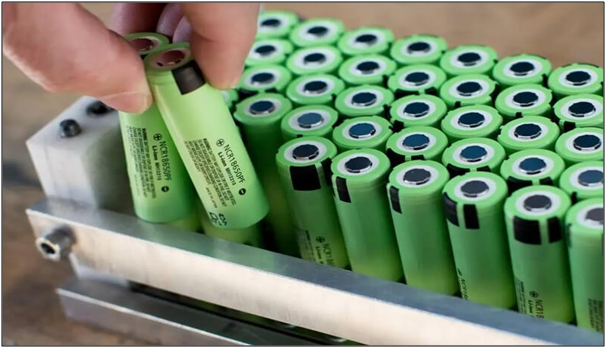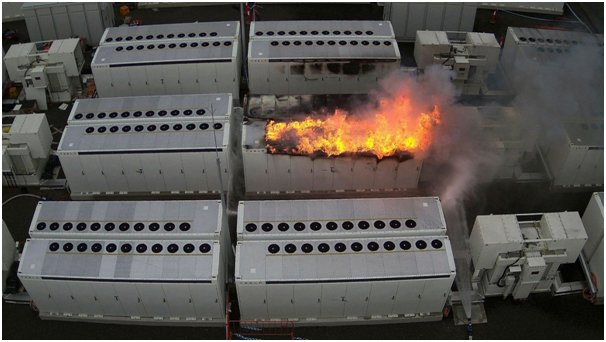Mobile phones, children’s toys, vehicles and electric bicycles are just a few of the consumer goods that run-on lithium batteries. Despite their widespread use, most people are unaware that lithium batteries are dangerous items that can endanger lives if they are not pack in line with transportation guideline. There are over 400 occurrences of linked incidents, and the majority included batteries-containing products such battery packs (power banks), e-cigarettes, mobile phones, laptops, and medical equipment. This article discusses the characteristics of lithium battery, risks associated with their logistics operations, and risk preventive measures.
Table of Contents
Types of Lithium Battery
Lithium metal batteries typically feature an anode made of lithium metal or lithium compounds and are primary (non-rechargeable) batteries. Batteries made of lithium alloy are also comprised of lithium metal. Devices including watches, calculators, cameras, temperature data recorders, car key fobs, and defibrillators are frequently powered by lithium metal batteries. A secondary (rechargeable) battery known as a lithium-ion battery only contains lithium in its ionic form in the electrolyte. Lithium-ion batteries are used to power devices such as mobile phones, laptop computers, tablets, power tools and electric powered bikes.

Lithium Battery Classification
Lithium batteries are classified under Class 9 – Miscellaneous dangerous goods in different UN numbers, as follows:
- UN 3480 Lithium-ion batteries (rechargeable)
- UN 3481 Lithium-ion batteries contained in equipment
- UN 3481 Lithium-ion batteries packed with equipment
- UN 3090 Lithium metal batteries (non-rechargeable lithium batteries)
- UN 3091 Lithium metal batteries contained in equipment
- UN 3091 Lithium metal batteries packed with equipment
These classifications provide a clear guidance to determine the contents are properly define and packed in accordance with International Air Transport Association (IATA) and/or airline regulation for transportation.

Shipping Restriction and Preparation for Shipping
Not all shipping companies are able to carry lithium battery or equipment packed with lithium battery. It is important to understand which carrier has a proper guideline in place for shipping these items. It is also important that the carrier has trained personnel who understand how lithium battery works and how to handle them. Requirements for safety have led to a tightening of transport regulations when transporting lithium batteries. There could be severe consequences, including heavy penalties, for breaching these regulations. The shipper is legally responsible for the declaration, classification, packing, marking, labelling and documentation of the consignment. Thus, it is important that shippers understand the classification of lithium battery. The majority of these businesses will offer a shipping manual outlining their particular specifications for shipping lithium-ion and lithium metal batteries depending on the mode of transportation chosen; however, the shipper is still required to provide the carrier with the necessary paperwork, such as a dangerous goods declaration form, a Material Safety Data Sheet (MSDS), a shipping invoice, and a packing list.

Proper Labelling
All hazardous materials are categorized into one of nine hazard classes and are subject to UN requirements. The classification for lithium batteries is Class 9-Miscellaneous. Lithium batteries must be marked and labelled properly while being shipped by air. Packages holding dangerous items should be marked and labelled so that everyone involved in its transit is aware of what is within, how to handle it safely during shipment, where to position it during transport, and how to handle the situation if something goes wrong. Every marking must be durably applied or printed on the package visible and legible. The marking must be capable of withstanding the weather, presented in English and usage of additional languages if necessary.
Shipment Packaging
Using an UN-approved container is crucial in the transportation of batteries since they retain a charge that makes them susceptible to short circuits, overheating and fire. An incident can be avoided, and safety is guaranteed throughout the entire handling and shipment procedure by using correct packing. Lithium batteries require both inner and outside packaging in order to be shipped. Batteries are internally packed to minimize shifting, moving, and damage during shipping that could result in overheating and catching fire. For inner packing, materials like fibreboard, metal, wood, and plastic can be used. The outside packaging is built, tested, and engineered to better protect the contents from further harm. To prevent crushing and content exposure during handling and transit, the outer packaging needs to be sturdy and rigid.
Compliance with regulations
Parties handling hazardous materials are required by law to follow the regulations. According to the regulatory authority, the Civil Aviation Authority of Singapore, all air carriers, shippers, and freight forwarders are expected to follow by a set of guidelines when handling the cargo in order to protect the safety of everyone. For instance, the parties must obtain a dangerous goods permit from the agency before attempting to import or export the products. The Hazardous Materials Regulations (HMR) must be followed by all companies handling materials on a global scale. The rule specifies the minimal requirements that should be considered by the parties in accordance with the International Civil Aviation Organization Technical Instructions (ICAO TI). Additionally, shippers, air carriers, and freight forwarders must follow by the United Nations (UN) Model Regulations, which outline the proper management of hazardous chemicals during various modes of transportation.
Lithium Battery Storage
As more gadgets and appliances are created for use with batteries, it is inevitable that more warehouse space will be needed to store battery-powered goods. In order to reduce danger, it is crucial that warehouse operators had the appropriate training before being placed on the job. A predetermined emergency response strategy for handling damaged li-ion batteries must also include in the training. Only trained warehouse operator can manage packaged lithium-ion battery receiving, storing, despatching and supervision.

Dangerous Goods Assessment
It is necessary to assess all potential risks brought on by the dangerous goods in order to guide control efforts. The action is carried out to reduce adverse consequences on the environment, people or property. The risk assessment process must be documented for successful execution in order to identify all potential threats to a storage or transportation facility. The assessors must emphasize the compounds’ toxicological, physical, and chemical features as well as calculate the likelihood and severity of potential threats in order to have an impact on readiness. It is essential that the activity be carried out by qualified/trained individuals in order to identify all risk variables and develop appropriate control mechanisms.
Receiving and Storing Dangerous Goods
Dangerous products should be received and stored in a separate area of the warehouse. The staff should also receive training on how to handle these items. According to their classification and packaging groups, hazardous items may also need to be separated in the warehouses. Additionally, it is crucial to control potential ignition sources close to combustible materials, make the appropriate labels, and put up the right signage for safety. These processes help to reduce the possibility of risks brought on by accidental leaks or damage. For instance, explosives cannot be stored next to caustic liquids or flammable gases. Understanding the regulations for storing hazardous items is essential for both legal and safety reasons.

Conclusion
Lithium batteries have emerged as the preferred source of energy and have become a part of our everyday lives. Lithium batteries are categorized as harmful commodities, yet many consumers are unaware of this. The process of checking and determining if lithium batteries are packaged, labelled, correctly documented, and in conformity before the product is shipped is extensive and time-consuming since shipping lithium batteries poses dangerous risks. Despite how aggravating they can be, the laws that are in place are there for a good reason: to prevent catastrophic events that could result in fatalities.
References
Bong Ing Chyang. (2022). Compliance with regulation. SIPMM Publications. Available at SIPMM: https://publication.sipmm.edu.sg/major-considerations-managing-dangerous-goods/ (Accessed 25 November 2022).
D’Altorio, A. (2021). How to Pack & Ship Lithium-Ion Batteries. Available at https://www.smithcorona.com/blog/how-to-pack-ship-lithium-ion-batteries/ (Accessed 25 November 2022).
IATA. (2021). What to Know About How to Ship Lithium Batteries. Available at https://www.iata.org/en/publications/newsletters/iata-knowledge-hub/what-to-know-about-how-to-ship-lithium-batteries/ (Accessed 25 November 2022).
Jo Lau Chia Ling. (2022). Receiving and Storing Dangerous Goods. SIPMM Publications. Available at SIPMM: https://publication.sipmm.edu.sg/major-considerations-transporting-dangerous-goods/ (Accessed 25 November 2022).
Pitt, W. (2020). Things to know before transporting lithium batteries or batteries powered IoT devices. Available at https://www.saftbatteries.com/energizing-iot/things-know-transporting-lithium-batteries-or-battery-powered-iot-devices (Accessed 25 November 2022).
Simmonds, A. (2021). Lithium-ion battery risks in Warehousing and Distribution. Available at https://qbeeurope.com/news-and-events/blog-articles/lithium-ion-battery-risks-in-warehousing-and-distribution/ (Accessed 25 November 2022).
TUVSUD. (2022). Lithium-Ion battery storage and handling. Available at https://www.tuvsud.com/en-us/services/risk-management/fire-protection-engineering/lithium-ion-batteries (Accessed 25 November 2022).

